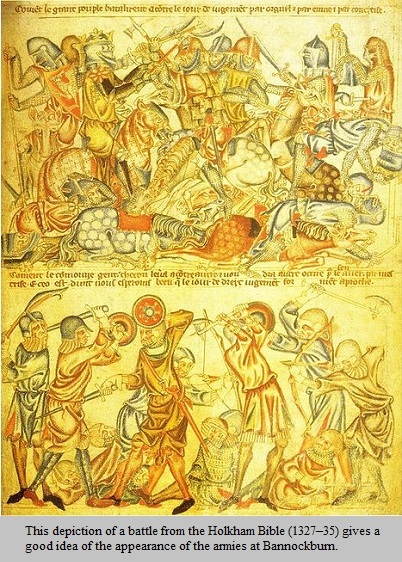
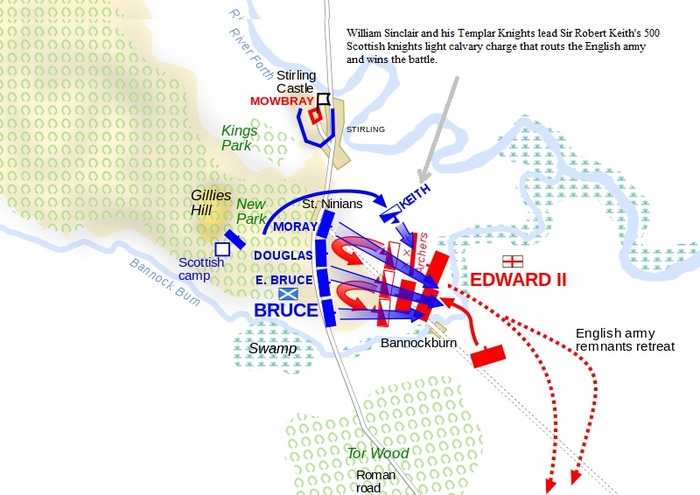



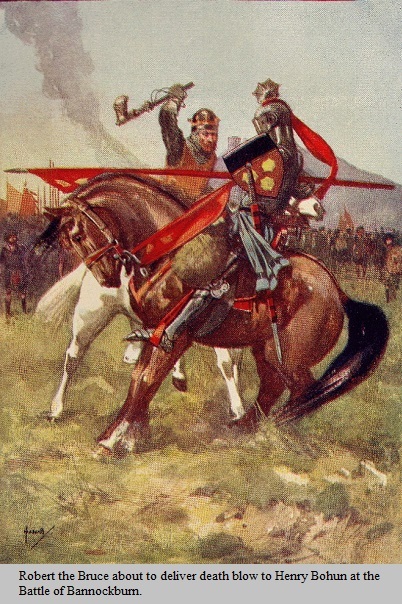

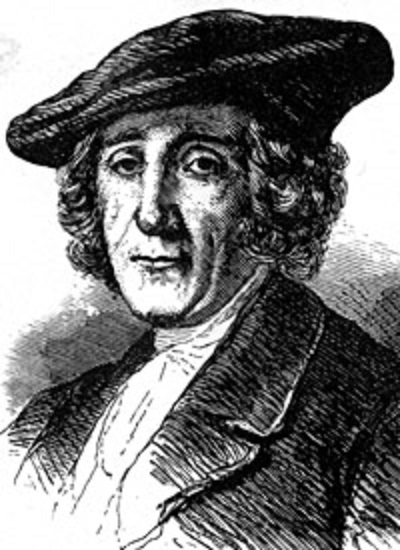
The bond between Clan St Clair-Sinclair and the Knights Templar was formally consummated with the marriage of Catherine St Clair to Hugues de Payens in 1129. Her father, Henry “The Holy” de Saint Clair (1060 – 1110), who was the first St Clair born in Scotland, participated as a knight-commander in the First Crusade (1096 – 1099). It’s likely that he first met Hugues de Payens, co-founder of the Knights Templar, in the Holy Land, and may have even fought in battles with him there. Hugues and his retinue later visited Scotland and received a land grant from Henry’s Rosslyn estate that established the Templars’ first priory outside Jerusalem.
On Friday, 13 October 1307 (the infamous Friday the 13th), King Philip IV of France (1268–1314) ordered the wholesale execution of the French Knights Templar. Pope Clement followed suit by later ordering all Templars arrested and their property confiscated. Given the widespread persecution of the Order throughout Christendom, it’s safe to assume many of the survivors sought a haven in Scotland. Both Henry de St Clair – Sinclair, 7th Earl of Rosslyn (1255 – 1336) and King Robert the Bruce (1274 – 1339), his close friend and cousin, welcomed them with open arms. Indeed, history records that Robert the Bruce gave them sanctuary in Scotland after Earl Sinclair granted them land on his Rosslyn estate. A bond of kindred friendship between Clan Sinclair and the Knights Templar began earlier when Henry “The Holy” de Saint Clair’s (1074 – 1110) fought in the First Crusade (1096 – 1099) with Hugues de Payens (1064 – 1136) 1st Grand Master of Knights Templar. Henry’s daughter later married Hugues in Scotland. Scottish Freemasonry evolved from this nascent relationship.
The contingent of Knights Templar at the Battle of Bannockburn (1314) led by Henry de Saint-Clair and his brother Willia undoubtedly turned the outcome of the battle in the Scot’s favor. While the Scottish army was a force to be reckoned with, they were no match for King Edward II‘s battle-hardened knights and foot soldiers. During the final battle on the second day (24 June 1314), mounted Templar knights led the attack that smashed through the ranks of King Edward’s infantry and cavalry. The 500 Scottish knights led by Sir Robert Keith (1262 – 1332) following them and then forced the opposition to retreat from the battlefield.
To commemorate their victory on that auspicious day in Scottish history, Robert the Bruce created the Order of Heridom and the Brothers of the Rosy Cross (later Rosicrucian Order). Later known as the Order of Kilwinning, this was the first masonic order created in Scotland. Robert was the first Grand Master of the Order.
The first Grand Master of the Grand Lodge of Scotland was William Saint Clair of Roslyn (died 1778). He was a member of Clan Sinclair.
The second Grand Master of the First Grand Lodge of England was George Payne (c. 1685 – 23 January 1757). He served as Secretary of the Exchequer during most of his Whitehall career.
Besides the demoralization of English troops must have felt after King Robert the Bruce famously slew Sir Henry Bohun the day before, the battlefield death of Gloucester must have put them on their heels, as well. He was by all standards the preeminent knight among the English nobility present. Unfortunately for him, he entered the fray without his battlefield standard, so the Scottish troops slew him instead of capturing him for ransom, as they surely would have done had they known his identity.
Lord Roslin’s 2nd great-grandson, Prince Henry Sinclair (1345 – 1444), 1st Sinclair Earl of Orkney, explored Nova Scotia, Massachusetts, and Rhode Island almost 100 years before Christopher Columbus reached the New World in 1492.
Orkney Earl William “The Seemly” Saint Clair (1042 – 1078), William the Conqueror‘s cousin, was made the first Baron of Roslin by Scottish King Malcolm III (1031 – 1093). With the marriage of his 2nd great-grandaughter, Isabella de Roslin (1165 – 1252), to Robert de Quitry (Chaumont), the hereditary barony changed hands to her husband’s heirs as her father died without a male successor, or so it would seem in lieu of evidence to the contrary. Their son Robert (1190 – 1248) adopted the Sinclair surname as the fifth Baron of Roslin.
Baron Sinclair was an agnatic descendant of Tonantius Ferreolus (418 – 476) Roman Praetorian Prefect of Gaul.
Notable casualties and captives of the Battle of Bannockburn (1314)
Related ancestral blog articles
Henry Sinclair, 7th Lord of Rosslyn, Knights Templar Commander
Birth 1255 in Rosslyn Castle, Midlothian, Scotland
Death 1336 in Rosslyn Castle, Midlothian, Scotland
Ancestry.com citation/Lineages
19th great grand-uncle PAINE-TRIPP-OUTWATER-COLLINS
4th cousin 22x removed DREUX-CAPET-D’ARTOIS-PLANTAGENET-FITZALAN-MOWBRAY-HOWARD-WOOD-COLLINS
5th cousin 21x removed CHAUMONT-CAPET-D’ARTOIS-PLANTAGENET-FITZALAN-MOWBRAY-HOWARD-WOOD-COLLINS
5th cousin 23x removed CHAUMONT-CAPET-D’EVREUX-ROHAN-LANDRY-BOURG-CYR-BRULE
7th cousin 22x removed NORMANDY-PLANTAGENET-HOWARD-WOOD-COLLINS
7th cousin 25x removed CHAUMONT-CAPET-HOLLAND-SIMMONS-COLLINS
10th cousin 23x removed DREUX-BAUDEMENT-BRAINE-HARCOURT-HOLLAND-SIMMONS-COLLINS
11th cousin 22x removed DUNBAR-WESSEX-HOWARD-WOOD-COLLINS
SOURCES
The Holy Blood and the Saint-Clairs
The Sinclair / St. Clair DNA Study
William Sinclair, First Earl of Caithness of the Sinclair Line
BIBLIOGRAPHY
Morals and Dogma of the Ancient and Accepted Scottish Rite of Freemasonry
Scottish Rite Masonry, Volume 1
Scottish Rite Masonry, Volume 2
The Patricians, A Genealogical Study – Ebook Editions US$5.95
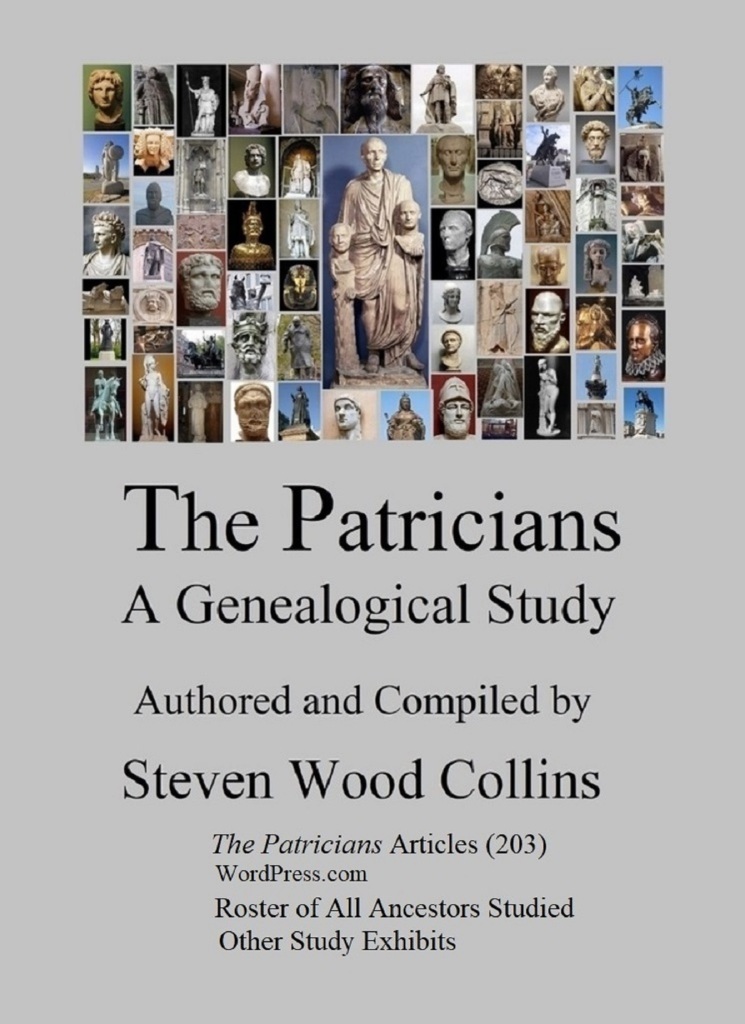

Steven Wood Collins (1952 – ) Antiquarian, Genealogist, Novelist
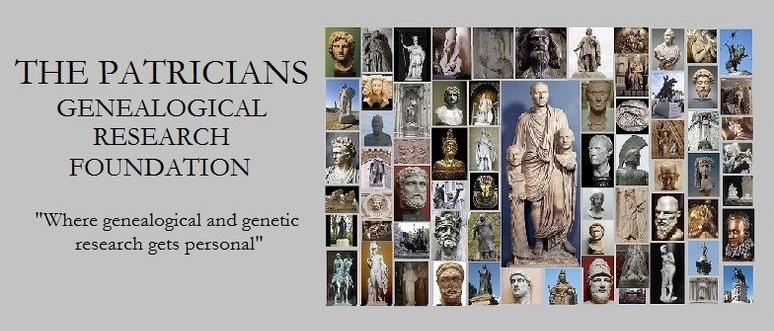
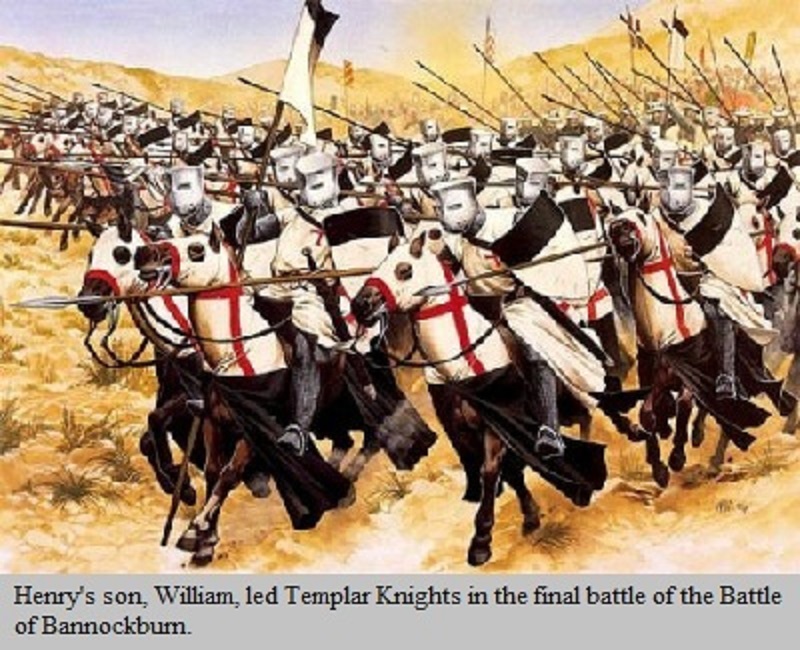
65 replies on “Sir Henry Sinclair II, 7th Lord of Rosslyn (1255 – 1336) Commander of Knights Templar at the Battle of Bannockburn”
[…] Henry de St Clair – Sinclair, 7th Earl of Rosslyn (1255 – 1336) GGU […]
LikeLike
[…] Henry de St Clair – Sinclair, 7th Earl of Rosslyn (1255 – 1336) GGU […]
LikeLike
[…] Henry de St Clair – Sinclair, 7th Earl of Rosslyn (1255 – 1336) GGU […]
LikeLike
[…] Henry de St Clair – Sinclair, 7th Earl of Rosslyn (1255 – 1336) GGU […]
LikeLike
[…] Henry de St Clair – Sinclair, 7th Earl of Rosslyn (1255 – 1336) GGU […]
LikeLike
[…] Henry de St Clair – Sinclair, 7th Earl of Rosslyn (1255 – 1336) GGU […]
LikeLike
[…] Henry de St Clair – Sinclair, 7th Earl of Rosslyn (1255 – 1336) GGU […]
LikeLike
[…] Henry de St Clair – Sinclair, 7th Earl of Rosslyn (1255 – 1336) GGU […]
LikeLike
[…] Henry de St Clair – Sinclair, 7th Earl of Rosslyn (1255 – 1336) GGU […]
LikeLike
[…] Henry de St Clair – Sinclair, 7th Earl of Rosslyn (1255 – 1336) GGU […]
LikeLike
[…] Henry de St Clair – Sinclair, 7th Earl of Rosslyn (1255 – 1336) GGU […]
LikeLike
[…] agnatic descendant of Tonantius Ferreolus (418 – 476) Roman Praetorian Prefect of Gaul and Henry de St Clair – Sinclair, 7th Earl of Rosslyn (1255 – 1336) […]
LikeLike
[…] Henry de St Clair – Sinclair, 7th Earl of Rosslyn (1255 – 1336) GGU […]
LikeLike
[…] Henry de St Clair – Sinclair, 7th Earl of Rosslyn (1255 – 1336) GGU […]
LikeLike
[…] Henry de St Clair – Sinclair, 7th Earl of Rosslyn (1255 – 1336) GGU […]
LikeLike
[…] Henry de St Clair – Sinclair, 7th Earl of Rosslyn (1255 – 1336) GGU […]
LikeLike
[…] Henry de St Clair – Sinclair, 7th Earl of Rosslyn (1255 – 1336) GGU […]
LikeLike
[…] Henry de St Clair – Sinclair, 7th Earl of Rosslyn (1255 – 1336) GGU […]
LikeLike
[…] Henry de St Clair – Sinclair, 7th Earl of Rosslyn (1255 – 1336) GGU […]
LikeLike
[…] Henry de St Clair – Sinclair, 7th Earl of Rosslyn (1255 – 1336) GGU […]
LikeLike
[…] Henry de St Clair – Sinclair, 7th Earl of Rosslyn (1255 – 1336) GGU […]
LikeLike
[…] Henry de St Clair – Sinclair, 7th Earl of Rosslyn (1255 – 1336) GGU […]
LikeLike
[…] Henry de St Clair – Sinclair, 7th Earl of Rosslyn (1255 – 1336) GGU […]
LikeLike
[…] Henry de St Clair – Sinclair, 7th Earl of Rosslyn (1255 – 1336) GGU […]
LikeLike
[…] Henry de St Clair – Sinclair, 7th Earl of Rosslyn (1255 – 1336) GGU […]
LikeLike
[…] Henry de St Clair – Sinclair, 7th Earl of Rosslyn (1255 – 1336) GGU […]
LikeLike
[…] Henry de St Clair – Sinclair, 7th Earl of Rosslyn (1255 – 1336) GGU […]
LikeLike
[…] Henry de St Clair – Sinclair, 7th Earl of Rosslyn (1255 – 1336) GGU […]
LikeLike
[…] Henry de St Clair – Sinclair, 7th Earl of Rosslyn (1255 – 1336) GGU […]
LikeLike
[…] Henry de St Clair – Sinclair, 7th Earl of Rosslyn (1255 – 1336) GGU […]
LikeLike
[…] Henry de St Clair – Sinclair, 7th Earl of Rosslyn (1255 – 1336) GGU […]
LikeLike
[…] Henry de St Clair – Sinclair, 7th Earl of Rosslyn (1255 – 1336) GGU […]
LikeLike
[…] Henry de St Clair – Sinclair, 7th Earl of Rosslyn (1255 – 1336) GGU […]
LikeLike
[…] Henry de St Clair – Sinclair, 7th Earl of Rosslyn (1255 – 1336) GGU […]
LikeLike
[…] Henry de St Clair – Sinclair, 7th Earl of Rosslyn (1255 – 1336) GGU […]
LikeLike
[…] Henry de St Clair – Sinclair, 7th Earl of Rosslyn (1255 – 1336) GGU […]
LikeLike
[…] Henry de St Clair – Sinclair, 7th Earl of Rosslyn (1255 – 1336) GGU […]
LikeLike
[…] Henry de St Clair – Sinclair, 7th Earl of Rosslyn (1255 – 1336) GGU […]
LikeLike
[…] Henry de St Clair – Sinclair, 7th Earl of Rosslyn (1255 – 1336) GGU […]
LikeLike
[…] Henry de St Clair – Sinclair, 7th Earl of Rosslyn (1255 – 1336) […]
LikeLike
[…] Henry de St Clair – Sinclair, 7th Earl of Rosslyn (1255 – 1336) GGU […]
LikeLike
[…] Henry de St Clair – Sinclair, 7th Earl of Rosslyn (1255 – 1336) […]
LikeLike
[…] Henry de St Clair – Sinclair, 7th Earl of Rosslyn (1255 – 1336) […]
LikeLike
[…] Henry de St Clair – Sinclair, 7th Earl of Rosslyn (1255 – 1336) GGU […]
LikeLike
[…] Henry de St Clair – Sinclair, 7th Earl of Rosslyn (1255 – 1336) GGU […]
LikeLike
[…] Henry de St Clair – Sinclair, 7th Earl of Rosslyn (1255 – 1336) GGU […]
LikeLike
[…] Henry de St Clair – Sinclair, 7th Earl of Rosslyn (1255 – 1336) GGU […]
LikeLike
[…] Henry de St Clair – Sinclair, 7th Earl of Rosslyn (1255 – 1336) GGU […]
LikeLike
[…] Henry de St Clair – Sinclair, 7th Earl of Rosslyn (1255 – 1336) GGU […]
LikeLike
[…] Henry de St Clair – Sinclair, 7th Earl of Rosslyn (1255 – 1336) GGU […]
LikeLike
[…] Henry de St Clair – Sinclair, 7th Earl of Rosslyn (1255 – 1336) […]
LikeLike
[…] Henry de St Clair – Sinclair, 7th Earl of Rosslyn (1255 – 1336) […]
LikeLike
[…] Henry de St Clair – Sinclair, 7th Earl of Rosslyn (1255 – 1336) GGU agnatic 19 […]
LikeLike
[…] Henry de St Clair – Sinclair, 7th Earl of Rosslyn (1255 – 1336) […]
LikeLike
[…] Henry de St Clair – Sinclair, 7th Earl of Rosslyn (1255 – 1336) GGU agnatic 19 […]
LikeLike
[…] Henry de St Clair – Sinclair, 7th Earl of Rosslyn (1255 – 1336) GGU agnatic 19 […]
LikeLike
[…] Henry de St Clair – Sinclair, 7th Earl of Rosslyn (1255 – 1336) GGU agnatic 19 […]
LikeLike
[…] Henry de St Clair – Sinclair, 7th Earl of Rosslyn (1255 – 1336) […]
LikeLike
[…] Henry de St Clair – Sinclair, 7th Earl of Rosslyn (1255 – 1336) […]
LikeLike
[…] Henry de St Clair – Sinclair, 7th Earl of Rosslyn (1255 – 1336) GGU […]
LikeLike
[…] Henry de St Clair – Sinclair, 7th Earl of Rosslyn (1255 – 1336) […]
LikeLike
[…] Henry de St Clair – Sinclair, 7th Earl of Rosslyn (1255 – 1336) […]
LikeLike
[…] Henry de St Clair – Sinclair, 7th Earl of Rosslyn (1255 – 1336) Commander of Knights Templar at … […]
LikeLike
[…] Henry de St Clair – Sinclair, 7th Earl of Rosslyn (1255 – 1336) Commander of Knights Templar at … […]
LikeLike
[…] Henry de St Clair – Sinclair, 7th Earl of Rosslyn (1255 – 1336) Commander of Knights Templar at … […]
LikeLike